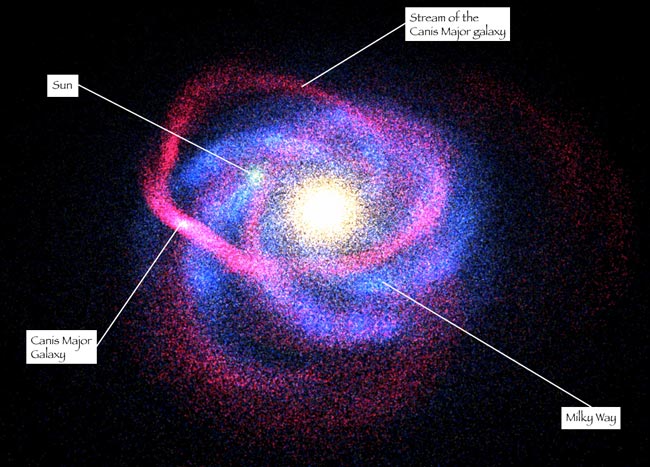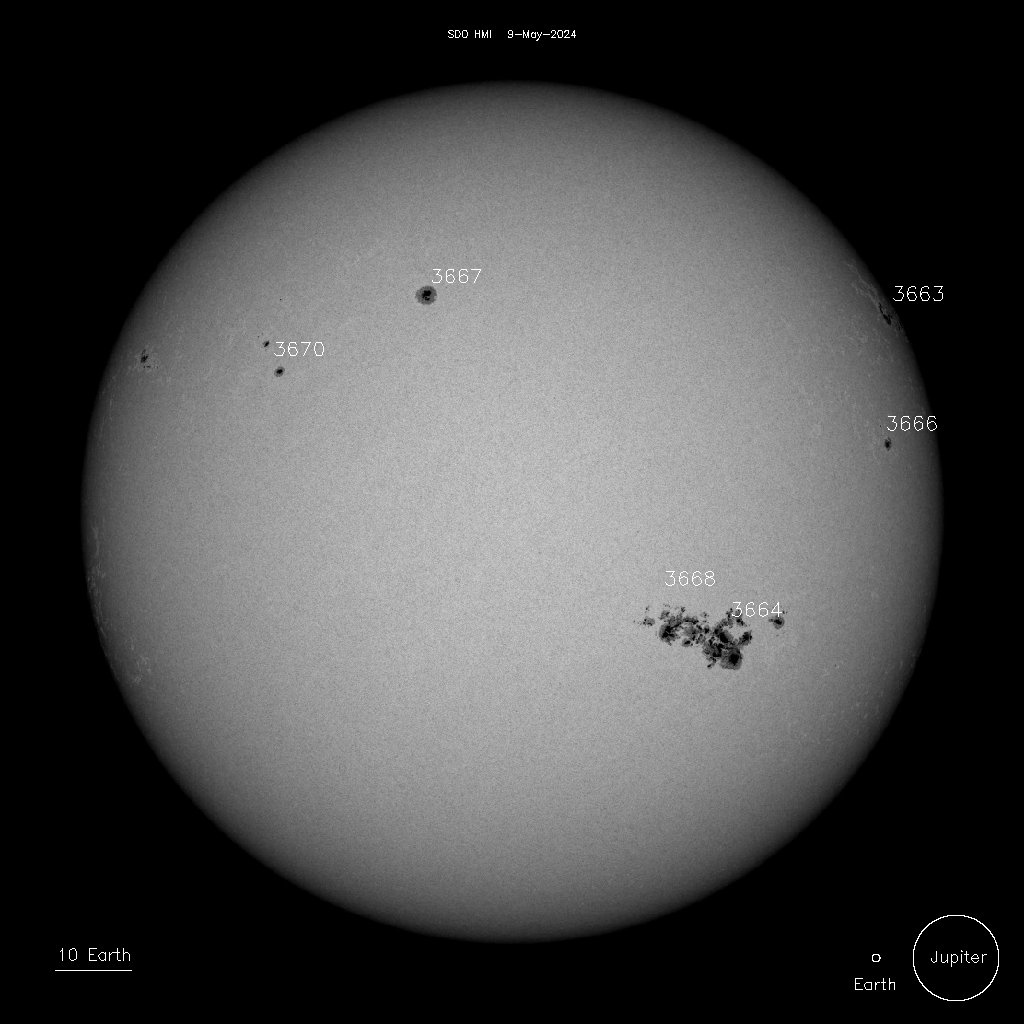Canis Major Dwarf Galaxy (CMa Dwarf)
ra: 07:12:35.00 dec: -27:40:00 - 25.000 l.y. - Irregular
Leaving the Milky Way the first galaxy that is encountered is the Canis Major Dwarf (CMa Dwarf).
It's a satellite irregular galaxy at 25.000 l.y. away from the Solar System and 42.000 l.y. from the galactic center strongly disturbed by the tidal forces of the Milky Way. The stars tear from that galaxy form a ring around our galaxy called Monoceros Ring and discovered using the Sloan Digital Sky Survey (SDSS).
It was first discovered only in 2003 because, despite the closeness, it's being located on the galactic plane and it's obscured by dust and gas and was identified by infrared observations.
Half65.
ra: 07:12:35.00 dec: -27:40:00 - 25.000 l.y. - Irregular
Leaving the Milky Way the first galaxy that is encountered is the Canis Major Dwarf (CMa Dwarf).
It's a satellite irregular galaxy at 25.000 l.y. away from the Solar System and 42.000 l.y. from the galactic center strongly disturbed by the tidal forces of the Milky Way. The stars tear from that galaxy form a ring around our galaxy called Monoceros Ring and discovered using the Sloan Digital Sky Survey (SDSS).
It was first discovered only in 2003 because, despite the closeness, it's being located on the galactic plane and it's obscured by dust and gas and was identified by infrared observations.
Half65.
Galassia Nana del Cane Maggiore (CMa Dwarf)
ra: 07:12:35.00 dec: -27:40:00 - 25.000 a.l. - Irregolare
Lasciando la Via Lattea la prima galassia che si incontra è la Galassia Nana del Cane Maggiore (CMa Dwarf).
E' una galassia satellite irregolare a 25.000 a.l. di distanza dal Sistema Solare ed a 42.000 a.l. dal centro galattico fortemente disturbata dalle forze di marea della Via Lattea. Le stelle strappate da tale galassia formano un anello intorno alla nostra Galassia chiamato Anello dell'Unicorno scoperta usando lo Sloan Digital Sky Survey (SDSS).
Fu scoperta per la prima volta solo nel 2003 in quanto, nonostante la vicinanza, trovandosi sul piano galattico è occultata da polvere e gas ed è stata individuata grazie ad osservazioni nell'infrarosso.
Half65.






No comments:
Post a Comment